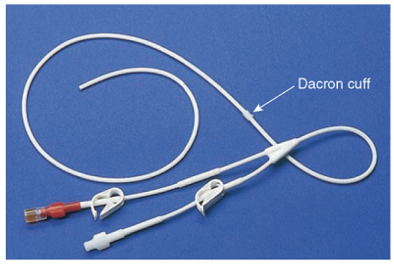ALERT: How to secure uncuffed PICC lines to prevent accidental dislodgement or migration?
Connected Care Quick Hits are up to date and evidence based recommendations for the care of children with medical complexity & technology dependence, from hospital to home.
ALERT: How to secure uncuffed PICC lines to prevent accidental dislodgement or migration?
SITUATION:
This QuickHit was informed by the need to address a recent backorder of 3 French (Fr) cuffed single lumen peripherally inserted central catheter (PICC) lines.
BACKGROUND:
Children with medical complexity may rely on central venous access devices (CVAD) in home and community care for long-term intravenous therapy including medication administration, parenteral nutrition, dialysis, hydration, and blood sampling. Types of CVADs include central venous lines (CVL) and peripherally inserted central catheters (PICC).
Currently, at SickKids, there is a backorder of 3 French cuffed single lumen PICCs (estimated return in late January) and there is no available substitute that is cuffed. As a result, 3 French uncuffed single lumen PICCs are being inserted when clinically indicated and children may transition to home and community with these PICC lines until the backorder is resolved.
ASSESSMENT:
The diameter of a PICC line is dependent on the child’s weight and size. PICC lines with a 3 French diameter are often inserted in infants and small children. Due to the backorder of 3 French cuffed single lumen PICC lines, a larger sized PICC line will be inserted if clinically appropriate.
The cuff of a PICC line (as shown in the image below) is placed under the skin at the insertion site and skin tissue develops around it which helps keep the PICC secure and prevents movement of the catheter. As a result, uncuffed PICC lines pose a greater risk for line migration and dislodgement in comparison to cuffed PICC lines.
There are several precautions that are required to help prevent accidental dislodgement of uncuffed PICC lines in home and community settings. Accidental dislodgements can typically be prevented by using appropriate securement methods and by performing frequent assessments of the site.
Signs and symptoms of CVAD dislodgement may include:
Increased external length of the CVAD
Dacron cuff visible outside of the skin
Edema or leaking at the exit site
Burning sensation or pain with infusions
Difficulty aspirating blood
RECOMMENDATION:
Connected Care recommends the following to prevent accidental dislodgement or migration for infants or children with uncuffed PICC lines in home and community settings:
Review the child’s care plan to confirm the type of PICC line the child has, specifically whether it is cuffed or uncuffed. Partner with the child and their family caregiver(s) to discuss the importance of PICC line securement.
Assess the child’s PICC site, external length of the line, dressing integrity and correct placement of securement devices frequently.
Change the PICC dressing every 7 days or as needed if loose or soiled. Review the following video on how to perform CVAD dressing changes
Ensure appropriate securement of the PICC line during dressing changes by:
Having extra support to complete dressing changes when needed (e.g., 3 people instead of 2 people)
Using a sterile gloved hand or chlorhexidine swab stick to apply pressure at the site to stabilize the line
Using extra caution when removing the dressing from the site
Stabilizing the child’s arm during dressing changes
Consider using a secondary securement device (i.e. Grip-Lok) to anchor IV tubing for children that are receiving multiple concurrent infusions through the PICC line.
Ensure that a fully assembled CVAD emergency kit remains with the child at all times in case of accidental dislodgement. Review the following videoon how to manage dislodgements and other emergency procedures.
Review the Connected Care Quick Hit on securement of CVADs. Consider initiating a Connected Care Live consultation for ‘real-time’ support on how to secure uncuffed PICC lines.














